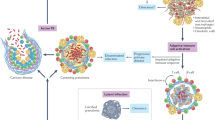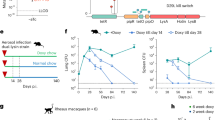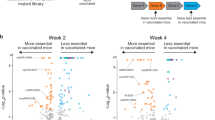Abstract
We report the involvement of an evolutionarily conserved set of mycobacterial genes, the esx-3 region, in evasion of bacterial killing by innate immunity. Whereas high-dose intravenous infections of mice with the rapidly growing mycobacterial species Mycobacterium smegmatis bearing an intact esx-3 locus were rapidly lethal, infection with an M. smegmatis Δesx-3 mutant (here designated as the IKE strain) was controlled and cleared by a MyD88-dependent bactericidal immune response. Introduction of the orthologous Mycobacterium tuberculosis esx-3 genes into the IKE strain resulted in a strain, designated IKEPLUS, that remained susceptible to innate immune killing and was highly attenuated in mice but had a marked ability to stimulate bactericidal immunity against challenge with virulent M. tuberculosis. Analysis of these adaptive immune responses indicated that the highly protective bactericidal immunity elicited by IKEPLUS was dependent on CD4+ memory T cells and involved a distinct shift in the pattern of cytokine responses by CD4+ cells. Our results establish a role for the esx-3 locus in promoting mycobacterial virulence and also identify the IKE strain as a potentially powerful candidate vaccine vector for eliciting protective immunity to M. tuberculosis.
This is a preview of subscription content, access via your institution
Access options
Subscribe to this journal
Receive 12 print issues and online access
$259.00 per year
only $21.58 per issue
Buy this article
- Purchase on SpringerLink
- Instant access to full article PDF
Prices may be subject to local taxes which are calculated during checkout






Similar content being viewed by others
References
Dye, C., Scheele, S., Dolin, P., Pathania, V. & Raviglione, M.C. Consensus statement. Global burden of tuberculosis: estimated incidence, prevalence, and mortality by country. WHO Global Surveillance and Monitoring Project. J. Am. Med. Assoc. 282, 677–686 (1999).
Gandhi, N.R. et al. Extensively drug-resistant tuberculosis as a cause of death in patients co-infected with tuberculosis and HIV in a rural area of South Africa. Lancet 368, 1575–1580 (2006).
Colditz, G.A. et al. Efficacy of BCG vaccine in the prevention of tuberculosis. Meta-analysis of the published literature. J. Am. Med. Assoc. 271, 698–702 (1994).
Corbett, E.L. et al. The growing burden of tuberculosis: global trends and interactions with the HIV epidemic. Arch. Intern. Med. 163, 1009–1021 (2003).
Hesseling, A.C. et al. The risk of disseminated bacille Calmette-Guerin (BCG) disease in HIV-infected children. Vaccine 25, 14–18 (2007).
Hinchey, J. et al. Enhanced priming of adaptive immunity by a proapoptotic mutant of Mycobacterium tuberculosis. J. Clin. Invest. 117, 2279–2288 (2007).
Orme, I.M. Preclinical testing of new vaccines for tuberculosis: a comprehensive review. Vaccine 24, 2–19 (2006).
Skeiky, Y.A. & Sadoff, J.C. Advances in tuberculosis vaccine strategies. Nat. Rev. Microbiol. 4, 469–476 (2006).
Sander, C.R. et al. Safety and immunogenicity of a new TB vaccine, MVA85A, in M. tuberculosis infected individuals. Am. J. Respir. Crit. Care Med. 179, 724–733 (2009).
Armstrong, J.A. & Hart, P.D. Response of cultured macrophages to Mycobacterium tuberculosis, with observations on fusion of lysosomes with phagosomes. J. Exp. Med. 134, 713–740 (1971).
Fulton, S.A. et al. Inhibition of major histocompatibility complex II expression and antigen processing in murine alveolar macrophages by Mycobacterium bovis BCG and the 19-kilodalton mycobacterial lipoprotein. Infect. Immun. 72, 2101–2110 (2004).
Pai, R.K. et al. Prolonged toll-like receptor signaling by Mycobacterium tuberculosis and its 19-kilodalton lipoprotein inhibits gamma interferon-induced regulation of selected genes in macrophages. Infect. Immun. 72, 6603–6614 (2004).
Dao, D.N. et al. Mycolic acid modification by the mmaA4 gene of M. tuberculosis modulates IL-12 production. PLoS Pathog. 4, e1000081 (2008).
Baena, A. & Porcelli, S.A. Evasion and subversion of antigen presentation by Mycobacterium tuberculosis. Tissue Antigens 74, 189–204 (2009).
Mahairas, G.G., Sabo, P.J., Hickey, M.J., Singh, D.C. & Stover, C.K. Molecular analysis of genetic differences between Mycobacterium bovis BCG and virulent M. bovis. J. Bacteriol. 178, 1274–1282 (1996).
Behr, M.A. et al. Comparative genomics of BCG vaccines by whole-genome DNA microarray. Science 284, 1520–1523 (1999).
Lewis, K.N. et al. Deletion of RD1 from Mycobacterium tuberculosis mimics bacille Calmette-Guerin attenuation. J. Infect. Dis. 187, 117–123 (2003).
Pym, A.S. et al. Recombinant BCG exporting ESAT-6 confers enhanced protection against tuberculosis. Nat. Med. 9, 533–539 (2003).
Stanley, S.A., Raghavan, S., Hwang, W.W. & Cox, J.S. Acute infection and macrophage subversion by Mycobacterium tuberculosis require a specialized secretion system. Proc. Natl. Acad. Sci. USA 100, 13001–13006 (2003).
Hsu, T. et al. The primary mechanism of attenuation of bacillus Calmette-Guerin is a loss of secreted lytic function required for invasion of lung interstitial tissue. Proc. Natl. Acad. Sci. USA 100, 12420–12425 (2003).
MacGurn, J.A. & Cox, J.S. A genetic screen for Mycobacterium tuberculosis mutants defective for phagosome maturation arrest identifies components of the ESX-1 secretion system. Infect. Immun. 75, 2668–2678 (2007).
de Jonge, M.I. et al. ESAT-6 from Mycobacterium tuberculosis dissociates from its putative chaperone CFP-10 under acidic conditions and exhibits membrane-lysing activity. J. Bacteriol. 189, 6028–6034 (2007).
Xu, J. et al. A unique Mycobacterium ESX-1 protein co-secretes with CFP-10/ESAT-6 and is necessary for inhibiting phagosome maturation. Mol. Microbiol. 66, 787–800 (2007).
Smith, J. et al. Evidence for pore formation in host cell membranes by ESX-1-secreted ESAT-6 and its role in Mycobacterium marinum escape from the vacuole. Infect. Immun. 76, 5478–5487 (2008).
van der Wel, N. et al. M. tuberculosis and M. leprae translocate from the phagolysosome to the cytosol in myeloid cells. Cell 129, 1287–1298 (2007).
Gey Van Pittius, N.C. et al. The ESAT-6 gene cluster of Mycobacterium tuberculosis and other high G+C Gram-positive bacteria. Genome Biol. 2, research0044 (2001).
Stinear, T.P. et al. Insights from the complete genome sequence of Mycobacterium marinum on the evolution of Mycobacterium tuberculosis. Genome Res. 18, 729–741 (2008).
Maciag, A. et al. Global analysis of the Mycobacterium tuberculosis Zur (FurB) regulon. J. Bacteriol. 189, 730–740 (2007).
Rodriguez, G.M., Voskuil, M.I., Gold, B., Schoolnik, G.K. & Smith, I. ideR, an essential gene in Mycobacterium tuberculosis: role of IdeR in iron-dependent gene expression, iron metabolism, and oxidative stress response. Infect. Immun. 70, 3371–3381 (2002).
Talaat, A.M., Lyons, R., Howard, S.T. & Johnston, S.A. The temporal expression profile of Mycobacterium tuberculosis infection in mice. Proc. Natl. Acad. Sci. USA 101, 4602–4607 (2004).
Dubnau, E., Chan, J., Mohan, V.P. & Smith, I. Responses of Mycobacterium tuberculosis to growth in the mouse lung. Infect. Immun. 73, 3754–3757 (2005).
Sassetti, C.M., Boyd, D.H. & Rubin, E.J. Genes required for mycobacterial growth defined by high density mutagenesis. Mol. Microbiol. 48, 77–84 (2003).
Sassetti, C.M. & Rubin, E.J. Genetic requirements for mycobacterial survival during infection. Proc. Natl. Acad. Sci. USA 100, 12989–12994 (2003).
Siegrist, M.S. et al. Mycobacterial ESX-3 is required for mycobactin-mediated iron acquisition. Proc. Natl. Acad. Sci. USA 106, 18792–18797 (2009).
Flynn, J.L. & Chan, J. Immunology of tuberculosis. Annu. Rev. Immunol. 19, 93–129 (2001).
Orme, I.M. & Collins, F.M. Protection against Mycobacterium tuberculosis infection by adoptive immunotherapy. Requirement for T cell-deficient recipients. J. Exp. Med. 158, 74–83 (1983).
Pierre-Audigier, C. et al. Fatal disseminated Mycobacterium smegmatis infection in a child with inherited interferon gamma receptor deficiency. Clin. Infect. Dis. 24, 982–984 (1997).
Kumar, K.J., Chandra, J., Mandal, R.N., Dutta, R. & Jain, N.K. Fatal pulmonary infection caused by Mycobacterium smegmatis in an infant. Indian J. Pediatr. 62, 619–621 (1995).
Abdallah, A.M. et al. The ESX-5 secretion system of Mycobacterium marinum modulates the macrophage response. J. Immunol. 181, 7166–7175 (2008).
Raghavan, S., Manzanillo, P., Chan, K., Dovey, C. & Cox, J.S. Secreted transcription factor controls Mycobacterium tuberculosis virulence. Nature 454, 717–721 (2008).
Yang, C. et al. GLS/IL-12-modified Mycobacterium smegmatis as a novel anti-tuberculosis immunotherapeutic vaccine. Int. J. Tuberc. Lung Dis. 13, 1360–1366 (2009).
Yi, Z. et al. Recombinant M. smegmatis vaccine targeted delivering IL-12/GLS into macrophages can induce specific cellular immunity against M. tuberculosis in BALB/c mice. Vaccine 25, 638–648 (2007).
Yeremeev, V.V. et al. The 19-kD antigen and protective immunity in a murine model of tuberculosis. Clin. Exp. Immunol. 120, 274–279 (2000).
Sun, R. et al. Novel recombinant BCG expressing perfringolysin O and the over-expression of key immunodominant antigens; pre-clinical characterization, safety and protection against challenge with Mycobacterium tuberculosis. Vaccine 27, 4412–4423 (2009).
Kita, Y. et al. Novel recombinant BCG and DNA-vaccination against tuberculosis in a cynomolgus monkey model. Vaccine 23, 2132–2135 (2005).
van Dissel, J.T. et al. Ag85B-ESAT-6 adjuvanted with IC31 promotes strong and long-lived Mycobacterium tuberculosis specific T cell responses in naive human volunteers. Vaccine 28, 3571–3581 (2010).
Williams, A. et al. Boosting with poxviruses enhances Mycobacterium bovis BCG efficacy against tuberculosis in guinea pigs. Infect. Immun. 73, 3814–3816 (2005).
Whelan, K.T. et al. Safety and immunogenicity of boosting BCG vaccinated subjects with BCG: comparison with boosting with a new TB vaccine, MVA85A. PLoS ONE 4, e5934 (2009).
Vordermeier, H.M. et al. Viral booster vaccines improve Mycobacterium bovis BCG-induced protection against bovine tuberculosis. Infect. Immun. 77, 3364–3373 (2009).
Bendelac, A., Bonneville, M. & Kearney, J.F. Autoreactivity by design: innate B and T lymphocytes. Nat. Rev. Immunol. 1, 177–186 (2001).
Acknowledgements
We acknowledge the support of US National Institutes of Health (NIH) grants AI063537, AI093649, AI092448, AI26170 and AI051519 (Einstein Center for AIDS Research), and the Bill and Melinda Gates Foundation Collaboration for AIDS Vaccine Discovery. K.A.S. acknowledges support from the Albert Einstein College of Medicine's Institutional AIDS Training Grant T32-AI007501. We thank C. Harding, L. Ramachandra, G. Lauvau and S. Morris for advice and suggestions, as well as C. Colon-Berezin and S. Tiwari for helpful editing of the manuscript. Flow cytometry studies were carried out using core facilities supported by the Einstein Cancer Center (NIH/National Cancer Institute CA013330) and the Einstein Center for AIDS Research (NIH AI051519).
Author information
Authors and Affiliations
Contributions
K.A.S. constructed bacterial strains, performed or contributed to the design of most experiments, and analyzed and interpreted data. D.N.D. carried out portions of the infection and challenge experiments. M.F.G. contributed to the T cell adoptive transfer studies and designed, performed and analyzed all flow cytometry analyses. T.H. participated in design and construction of bacterial strains and in the performance of mouse infection and challenge experiments. P.J. contributed to construction of bacterial strains. M.M.V. and M.H.-T. assisted with experiments analyzing responding T cell populations. R.S.S. analyzed and scored the histopathology samples. B.C., M.C., J.K. and R.L. carried out mouse infections, organ harvesting and quantification of bacilli in tissues. D.O., J.C., I.M.O., S.A.P. and W.R.J. Jr. designed and interpreted experiments. K.A.S., S.A.P. and W.R.J. Jr. wrote the manuscript.
Corresponding author
Ethics declarations
Competing interests
The authors declare no competing financial interests.
Supplementary information
Supplementary Text and Figures
Supplementary Figures 1–9, Supplementary Tables 1–3 and Supplementary Methods (PDF 1454 kb)
Rights and permissions
About this article
Cite this article
Sweeney, K., Dao, D., Goldberg, M. et al. A recombinant Mycobacterium smegmatis induces potent bactericidal immunity against Mycobacterium tuberculosis. Nat Med 17, 1261–1268 (2011). https://doi.org/10.1038/nm.2420
Received:
Accepted:
Published:
Issue date:
DOI: https://doi.org/10.1038/nm.2420
This article is cited by
-
Bacteriophages of Mycobacterium tuberculosis, their diversity, and potential therapeutic uses: a review
BMC Infectious Diseases (2022)
-
Oxidization of TGFβ-activated kinase by MPT53 is required for immunity to Mycobacterium tuberculosis
Nature Microbiology (2019)
-
TLR-2 mediated cytosolic-Ca2+ surge activates ER-stress-superoxide-NO signalosome augmenting TNF-α production leading to apoptosis of Mycobacterium smegmatis-infected fish macrophages
Scientific Reports (2019)
-
Potential of recombinant Mycobacterium paragordonae expressing HIV-1 Gag as a prime vaccine for HIV-1 infection
Scientific Reports (2019)
-
GABAergic signaling linked to autophagy enhances host protection against intracellular bacterial infections
Nature Communications (2018)



